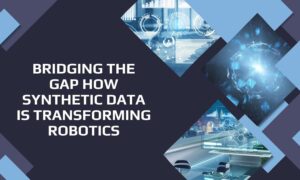In today’s digital age, data is a vital asset, but rising privacy concerns and strict regulations make sharing sensitive information increasingly challenging. Anuja Nagpal’s groundbreaking research on privacy-preserving synthetic data explores how AI advancements are transforming data-sharing across industries. Her work highlights the potential of synthetic data, which mirrors real-world datasets while safeguarding individual privacy. By maintaining statistical properties, these AI-generated datasets enable meaningful analysis without exposing personal information, providing a powerful solution to the growing challenge of secure and compliant data sharing.
The Rise of Privacy-Preserving Synthetic Data
In today’s digital age, data is an invaluable asset, driving innovation across sectors. However, with the increasing focus on privacy laws and data protection regulations, sharing sensitive data without compromising individual privacy has become a growing challenge. Privacy-preserving synthetic data, generated using advanced AI techniques, offers a solution by mimicking real-world data while safeguarding sensitive information. Synthetic datasets maintain statistical properties, enabling meaningful analysis while eliminating the risk of data breaches or unauthorized access to personal information.
Generative AI: The Backbone of Synthetic Data
At the core of privacy-preserving synthetic data are generative AI models like Differential Privacy (DP), Generative Adversarial Networks (GANs), and Variational Autoencoders (VAEs). These advanced techniques have transformed synthetic data generation.
- Differential Privacy (DP): This method adds noise to data, ensuring individual information remains hidden. By integrating DP, synthetic data protects personal information, even in large datasets.
- Generative Adversarial Networks (GANs): GANs use a two-network system, where one generates data, and the other identifies fakes, producing realistic synthetic data while safeguarding individual details.
- Variational Autoencoders (VAEs): VAEs compress data into latent spaces and generate new samples, offering a balance between privacy and data quality by preserving meaningful patterns.
Practical Applications Across Industries
- The potential of privacy-preserving synthetic data spans several industries, where data is vital but privacy must be protected.
- Healthcare: Synthetic data allows researchers to share and analyze medical information while preserving patient privacy. It accelerates the discovery of treatments and enhances diagnostic tools by training AI models on synthetic medical imaging without using sensitive patient data.
- Finance: The finance sector uses synthetic data to improve risk models. Banks and insurers can generate synthetic customer profiles and transactions for stress-testing and risk analysis without exposing real data, ensuring compliance with privacy regulations.
- Retail and Automotive: Synthetic data supports innovation in retail and automotive industries without compromising privacy. Retailers use synthetic customer data for product recommendations, while in the automotive sector, it helps develop autonomous vehicles.
Challenges and Considerations
Despite the promise of privacy-preserving synthetic data, several challenges remain. One of the key issues is balancing privacy and data utility, as stronger privacy protections like differential privacy can reduce the data’s effectiveness. Careful calibration is essential to maintain utility without compromising privacy. Scalability is another concern, as generating high-quality synthetic data, particularly for large datasets, requires significant computational power. Industries that rely on real-time data analysis need synthetic data generation techniques to keep up with their demands. Lastly, synthetic data is susceptible to attacks, such as model inversion and membership inference, which can expose sensitive information. Ongoing research is critical to strengthening defenses against these vulnerabilities.
The Road Ahead: Ethical Considerations and Innovation
Innovations in privacy-preserving synthetic data are set to influence global data protection regulations. As these technologies evolve, regulators may adjust guidelines to recognize synthetic data as a secure alternative, facilitating data sharing and collaboration while maintaining strict privacy standards. Beyond regulation, synthetic data holds promise for innovation in fields like personalized medicine and smart city planning, offering secure collaboration and access to high-quality datasets. However, as synthetic data becomes more realistic, ethical concerns arise, such as its misuse in deepfakes or misinformation. Establishing clear ethical guidelines and best practices will be crucial as this technology advances.
In conclusion, as Anuja Nagpal’s research illustrates, privacy-preserving synthetic data offers a powerful solution to the growing challenge of balancing data utility with privacy protection. The advancements in generative AI techniques like DP, GANs, and VAEs are pushing the boundaries of what’s possible in data science and AI. As industries continue to explore these innovations, the responsible and ethical use of synthetic data will play a pivotal role in shaping the future of data-driven technologies.


































